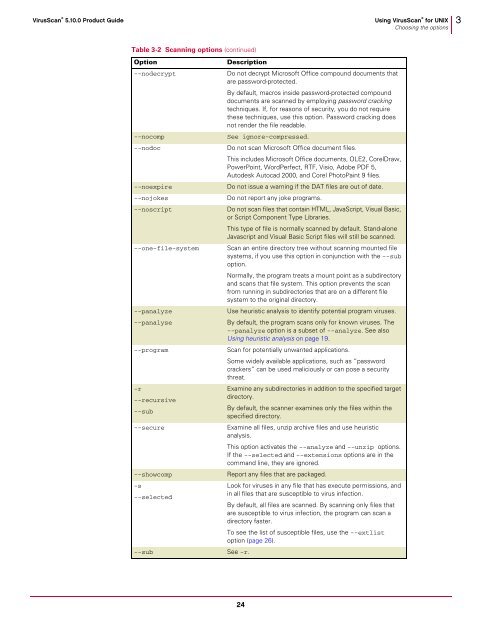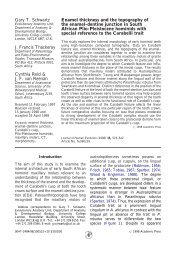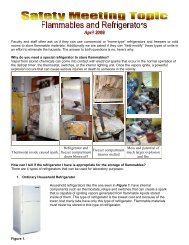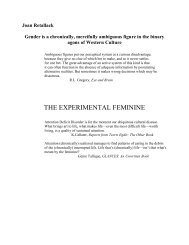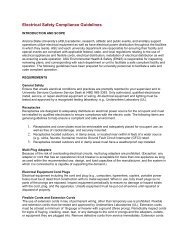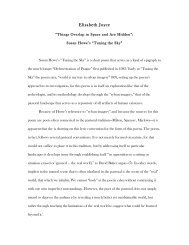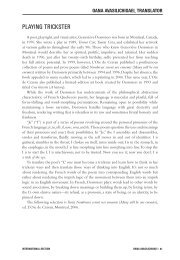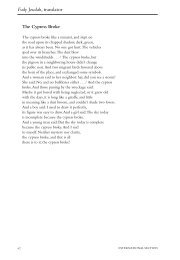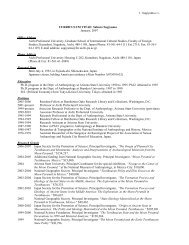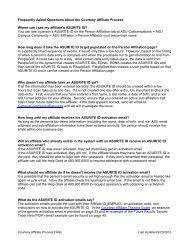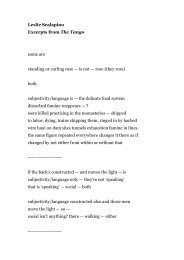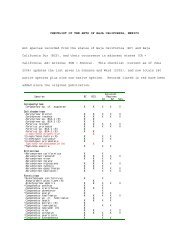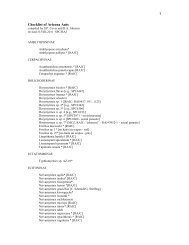VirusScan for UNIX - Arizona State University
VirusScan for UNIX - Arizona State University
VirusScan for UNIX - Arizona State University
You also want an ePaper? Increase the reach of your titles
YUMPU automatically turns print PDFs into web optimized ePapers that Google loves.
<strong>VirusScan</strong> ®<br />
5.10.0 Product Guide Using <strong>VirusScan</strong> ®<br />
<strong>for</strong> <strong>UNIX</strong><br />
Choosing the options<br />
Table 3-2 Scanning options (continued)<br />
Option Description<br />
--nodecrypt Do not decrypt Microsoft Office compound documents that<br />
are password-protected.<br />
By default, macros inside password-protected compound<br />
documents are scanned by employing password cracking<br />
techniques. If, <strong>for</strong> reasons of security, you do not require<br />
these techniques, use this option. Password cracking does<br />
not render the file readable.<br />
--nocomp See ignore-compressed.<br />
--nodoc Do not scan Microsoft Office document files.<br />
This includes Microsoft Office documents, OLE2, CorelDraw,<br />
PowerPoint, WordPerfect, RTF, Visio, Adobe PDF 5,<br />
Autodesk Autocad 2000, and Corel PhotoPaint 9 files.<br />
--noexpire Do not issue a warning if the DAT files are out of date.<br />
--nojokes Do not report any joke programs.<br />
--noscript Do not scan files that contain HTML, JavaScript, Visual Basic,<br />
or Script Component Type Libraries.<br />
This type of file is normally scanned by default. Stand-alone<br />
Javascript and Visual Basic Script files will still be scanned.<br />
--one-file-system Scan an entire directory tree without scanning mounted file<br />
systems, if you use this option in conjunction with the --sub<br />
option.<br />
Normally, the program treats a mount point as a subdirectory<br />
and scans that file system. This option prevents the scan<br />
from running in subdirectories that are on a different file<br />
system to the original directory.<br />
--panalyze<br />
Use heuristic analysis to identify potential program viruses.<br />
--panalyse<br />
By default, the program scans only <strong>for</strong> known viruses. The<br />
--panalyze option is a subset of --analyze. See also<br />
Using heuristic analysis on page 19.<br />
--program Scan <strong>for</strong> potentially unwanted applications.<br />
Some widely available applications, such as “password<br />
crackers” can be used maliciously or can pose a security<br />
threat.<br />
-r<br />
Examine any subdirectories in addition to the specified target<br />
directory.<br />
--recursive<br />
--sub<br />
By default, the scanner examines only the files within the<br />
specified directory.<br />
--secure Examine all files, unzip archive files and use heuristic<br />
analysis.<br />
This option activates the --analyze and --unzip options.<br />
If the --selected and --extensions options are in the<br />
command line, they are ignored.<br />
--showcomp Report any files that are packaged.<br />
-s<br />
--selected<br />
--sub See -r.<br />
Look <strong>for</strong> viruses in any file that has execute permissions, and<br />
in all files that are susceptible to virus infection.<br />
By default, all files are scanned. By scanning only files that<br />
are susceptible to virus infection, the program can scan a<br />
directory faster.<br />
To see the list of susceptible files, use the --extlist<br />
option (page 26).<br />
24<br />
3


